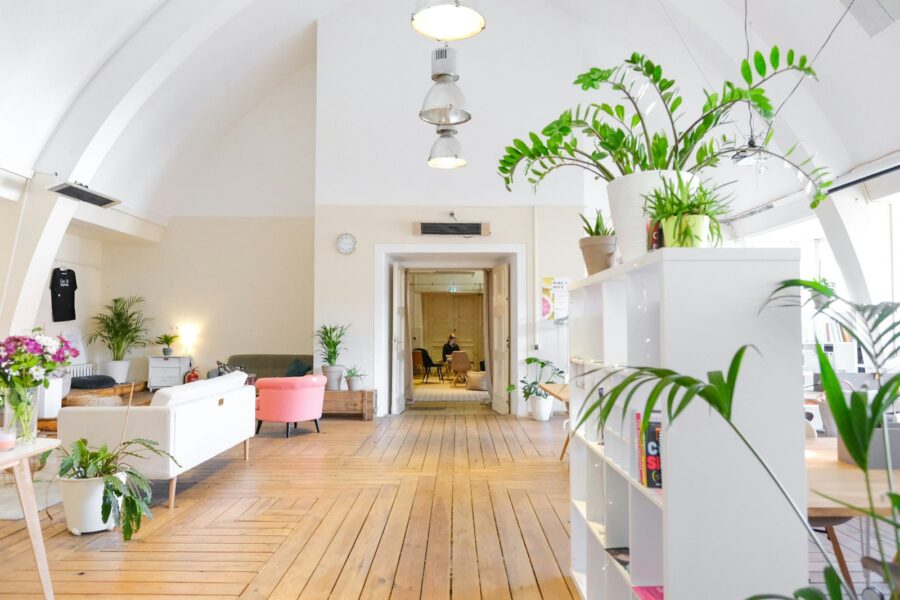Evidence has proved time and time again that a business’s success is contingent on the wellbeing and productivity of its employees.
A recent study by the University of Warwick showed that happiness in the workplace makes people approximately 12% more productive than otherwise, while research by the Confederation of British Industry [CBI] found that almost seven in 10 companies had seen increased productivity as a main benefit of introducing or evolving health and wellbeing policies.
It’s clear, therefore, that ensuring employees are satisfied at work is in the best interest of business leaders, but how exactly should they go about achieving this goal?
For many small-to-medium sized businesses [SMEs], the answer to improving employee wellbeing lies in things like regular company socials, rewarding and recognising good work, and providing mental health workshops to staff. All of these certainly play an important role in making people feel happier and more supported at work, but something that often goes overlooked in the pursuit of employee wellbeing and productivity is the working environment itself.
Make no mistake, the surroundings in which employees work are an important source of job satisfaction and have an effect on work motivation and interaction with colleagues. As such, it is vital for SMEs to ensure that their offices are best set up to accommodate the needs and desires of workers, providing the conditions required to make them happier and more productive as a result.
Here are three key changes that businesses can make to their offices to boost employee wellbeing and productivity.
-
Masters of Space
In the past, the approach many SMEs took to office space management was to remove any materials other than those essential for job performance. The rationale behind doing so was that, by being in a leaner working environment with fewer distractions, employees would be more focused on their jobs, creating a more efficient and productive workforce.
It should be obvious to anyone who’s spent any length of time working in an office environment that this approach to layout actually has the opposite effect on employees and their productivity. In fact, it’s fair to say that well-designed working environments that give employees a perception of control over the characteristics of their office layout are likely to make them feel considerably happier and more engaged at work.
This illustrates the importance for business leaders and their employees to become ‘masters’ of their own space, whereby they have complete autonomy over how best to lay out their office and furniture so as to strike a perfect balance between productivity and wellbeing. Indeed, each space has its own personality and unique characteristics, so taking a cookie cutter approach to office design is unlikely to provide an environment that’s conducive to an organisation’s specific needs.
A much more nuanced approach is needed, and every decision around layout must be considered and justified. For example, it’s not enough for an employer to buy a set of sofas and simply assume that in doing so they’ve provided staff with a suitable breakout space. Instead, sofas should be placed in areas that are both easily accessible and are an ample distance away from people’s desks, so as to allow staff to have a proper break from their duties without disrupting others who are still working.
While work itself should, of course, remain the priority – and businesses should strive for an approximate 70%:30% split between desks and soft seating respectively – considering exactly how office space flows and is used has huge implications for employee satisfaction, and productivity as a result. As such, businesses should ensure that both are taken into full consideration within the design of their offices, and that one doesn’t have a negative impact on the other.
-
Lighting and air
The normalisation of hybrid working brought by the pandemic has led to the birth of a new phenomenon in office design – ‘home-ification’. With workers having grown accustomed to working from home during the crisis, ‘home-ification’ has sought to recreate the level of comfort associated with the home in the office, providing an environment where employees feel as happy, comfortable, and productive as they do while working remotely.
Two of the most vital ingredients to recreating the sense of home that’s essential to ‘home-ification’ are fresh air and natural light. Besides helping to create an environment in which workers feel happy, comfortable, and productive, research shows that both play an important role in improving mental health and wellbeing at work.
For example, a team of US researchers found recently that workers sleep more hours when exposed to more sunlight during the day, helping them to focus more at work. The study involved separate experiments carried out in two near identical office environments, with the only significant difference being the level of natural lighting. Typical office workers were asked to work in both offices for one week, with researchers concluding that workers slept for longer periods of time when they worked in the office with more sunlight, and scored higher in cognitive tests.
Meanwhile, other evidence has shown that air quality in offices is linked directly to employee performance, with better ventilation aiding a worker’s ability to process information, make strategic decisions, and respond to crises.
In light of this – pun intended – business leaders should consider what they can do to introduce more natural lighting and fresh air into their office, embracing the homely aspects that are essential to achieving the ‘home-ification’ of the office.
-
Furniture
Another way that SMEs can simultaneously add to the ‘home-ification’ of their workplace and boost wellbeing and productivity is by introducing non-traditional office furniture into it. Proper office chairs and desks certainly carry their own health benefits for employees – aiding posture and reducing back strain, etc. – but the reality is that workers don’t simply want all the furniture in their office to have a purely practical function. By bridging the gap between the familiarity and comfort of the home with the professional demands of the office, business leaders can reinvigorate the workplace and even inspire a renewed sense of commitment from their employees.
As such, SME leaders should abandon a mindset that only conventional work furniture should be allowed in the office, instead incorporating comfy sofas, armchairs, or even beanbags into their workplace. Doing so provides workers with a space in which to hang out or relax on their breaks, alleviating employee stress and engendering a greater sense of unity among colleagues. This is fundamental to creating the positive work environments in which employees thrive, and work collaboratively to drive business success.
A place employees are proud to call theirs
On the face of it, how they lay out and design their offices may not seem like a particularly important consideration for business leaders to make, but the reality is that these decisions can have a profound impact on employee satisfaction and productivity.
Therefore, employers should think carefully about what they can do to make their office a more inviting and comfortable place for workers to be in, encouraging them to jump out of bed in the morning, raring to go for a productive day ahead, instead of hitting ‘snooze’ on their alarms!

Yaron Rosenblum
Yaron Rosenblum is the co-founder and CEO of flexible office space provider Canvas Offices, which provides bespoke and crafted private offices for businesses in the tech and creative industries.


